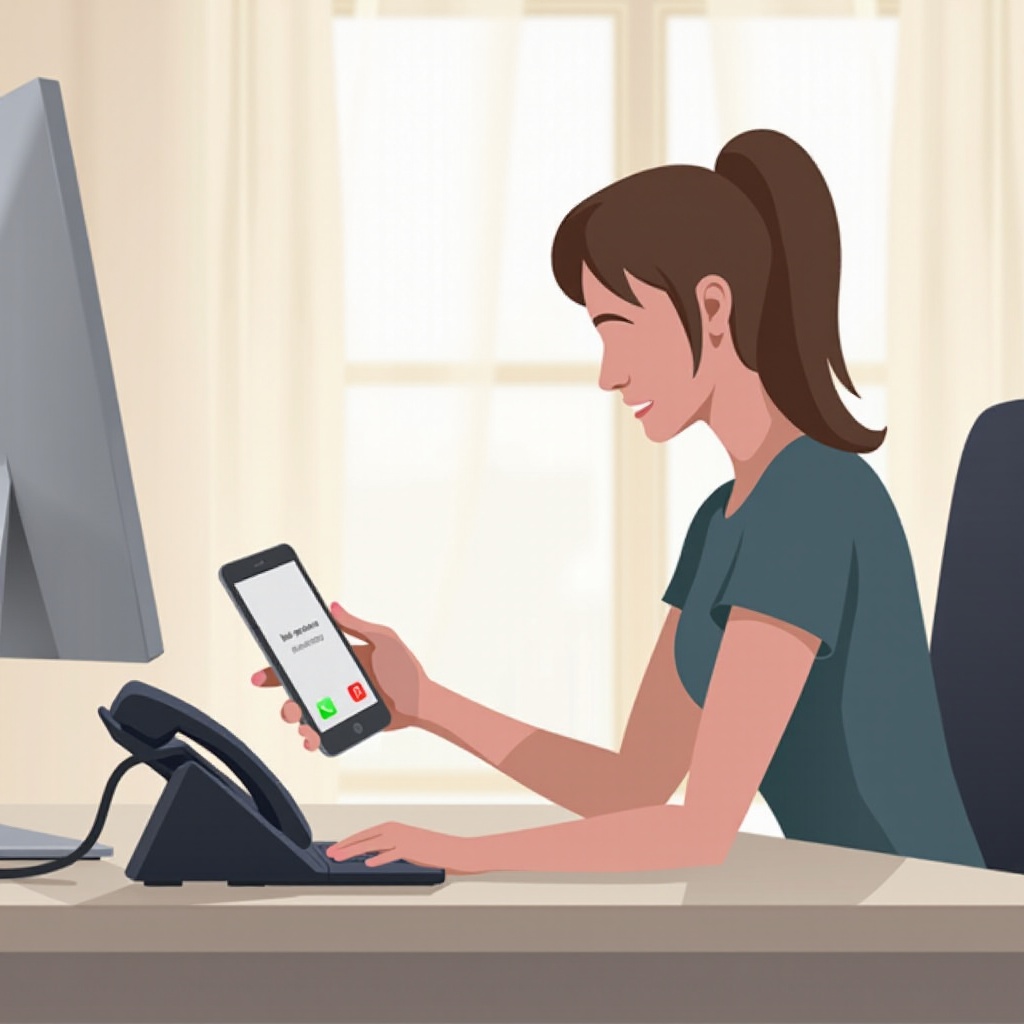Introduction
With the fast-paced lifestyle many of us lead, staying connected is more important than ever. One of the most effective ways to ensure you never miss a call is to divert calls from your home phone to your mobile. Whether you’re expecting an important call while out and about, or you simply prefer the convenience of answering from your mobile, call forwarding is a handy solution. In this guide, you will learn what call forwarding is, the benefits it offers, and how you can set it up with ease.

What is Call Forwarding?
Call forwarding, also known as call diversion, allows you to redirect incoming calls from one phone number to another. This means that any call made to your home phone can be automatically redirected to your mobile phone, ensuring you never miss an important conversation. The process can typically be managed through your phone’s settings or with the help of your service provider. By understanding call forwarding, you can make use of its various features to fit your unique needs.
This functionality is not only limited to home phones but also extends to mobile phones, making it a versatile tool for both personal and professional use. Whether you’re at home, in the office, or on the go, call forwarding ensures seamless communication.
Benefits of Diverting Calls to Mobile
Diverting calls from your home phone to your mobile offers several advantages:
- Availability: Stay reachable even if you’re away from home. Important calls can follow you wherever you go.
- Convenience: Manage all your calls from one device, eliminating the need to monitor multiple phones.
- Professionalism: For business purposes, it ensures you don’t miss calls from clients, enhancing your professionalism and reliability.
- Emergency Readiness: Always be available for critical or emergency calls, providing peace of mind to you and your loved ones.
- Flexibility: Customize your call-forwarding settings to suit different times and days, providing flexibility in how and when you receive calls.
By forwarding calls to a mobile, you combine the flexibility and mobility of your cell phone with the reliability of your home phone line.
Preparing for Call Forwarding
Before setting up call forwarding, make sure you’re prepared with the following steps:
- Check Compatibility: Ensure your home phone and mobile service support call forwarding. Most service providers offer this feature, but double-checking can save you time and hassle.
- Understand Your Plan: Familiarize yourself with the call forwarding features included in your service plan, including any potential costs involved with using call forwarding.
- Know Your Codes: To set up call forwarding, you may need specific dial codes provided by your service provider.
Once you have these essentials in place, you’re ready to proceed with the call forwarding setup.
Step-by-Step Guide to Divert Calls
Setting up call forwarding can vary based on the type of phone and service. Follow these step-by-step guides based on your requirement:
Traditional Landline Phones
- Pick up your handset and dial *72.
- Enter the mobile number where you want to forward calls.
- Press the # key and wait for confirmation.
Digital and VoIP Landline Phones
- Access the phone’s settings or configuration menu.
- Navigate to the call forwarding section.
- Input the desired mobile number and save the settings.
Mobile Phones (iOS & Android)
- Open the phone’s settings (typically found under ‘Call’ or ‘Phone’ settings).
- Select ‘Call Forwarding’.
- Enter the number you want calls to be forwarded to and activate the setting.
Once the call forwarding is set up, all incoming calls to your home phone will automatically divert to your mobile.
Call Forwarding with Service Providers
Depending on your service provider, the steps to set up call forwarding may vary slightly. Here’s a closer look at how to manage call forwarding with major providers:
Verizon
- Dial *72 followed by the mobile number.
- Press the # key to activate.
- To deactivate, dial *73.
AT&T
- Dial 21(your mobile number)#.
- Press ‘Send’ or wait for the confirmation.
- To cancel, dial #21#.
T-Mobile
- Dial *21(mobile number)# from your home phone.
- Press the call button.
- To deactivate, dial ##002#.
Other Providers
Check with your specific provider for the exact dial codes and procedures to set up call forwarding, as it can vary.

Using Third-party Apps for Call Forwarding
If your service provider does not support call forwarding, or you’re looking for more advanced features, third-party apps are a great alternative. Apps like Google Voice, Call Forwarding Lite, and others can offer more flexibility, such as forwarding calls based on specific times or conditions.
- Google Voice: Allows for call forwarding, screening, and voicemail management.
- Call Forwarding Lite: Simple interface for setting up call forwarding quickly.
- Line2: Provides an alternative phone number and advanced call routing features.
Explore options to find the app that best suits your needs.
Troubleshooting Common Issues
Even with a straightforward process, you may encounter issues with call forwarding. Here are some tips to troubleshoot common problems:
- No Forwarding: Confirm that the call forwarding feature is active. Retry setting it up with correct codes.
- Intermittent Forwarding: Test with another number to ensure the problem isn’t with your mobile phone.
- Cost Concerns: Check with your provider about any additional costs associated with the call forwarding service.
If you continue to experience issues, contact your service provider for further assistance.

Conclusion
Diverting calls from your home phone to your mobile is a simple yet effective way to stay connected, reach important calls, and ensure convenience. By following the steps outlined in this guide, and leveraging service provider features or third-party apps, you can easily manage call forwarding. Stay reachable and never miss an important call again.
Frequently Asked Questions
Can I forward calls from any type of home phone?
Yes, most home phone types support call forwarding, including traditional landlines, digital, and VoIP systems. Check with your service provider for specific compatibility.
Are there any costs associated with call forwarding?
Some providers may include call forwarding as part of their plan, while others may charge for the service. It’s best to confirm with your provider for any potential costs.
How can I disable call forwarding?
Disabling call forwarding typically involves dialing a specific code or accessing your phone’s settings. Common codes to deactivate include *73 or ##21#, but check with your provider for precise details.